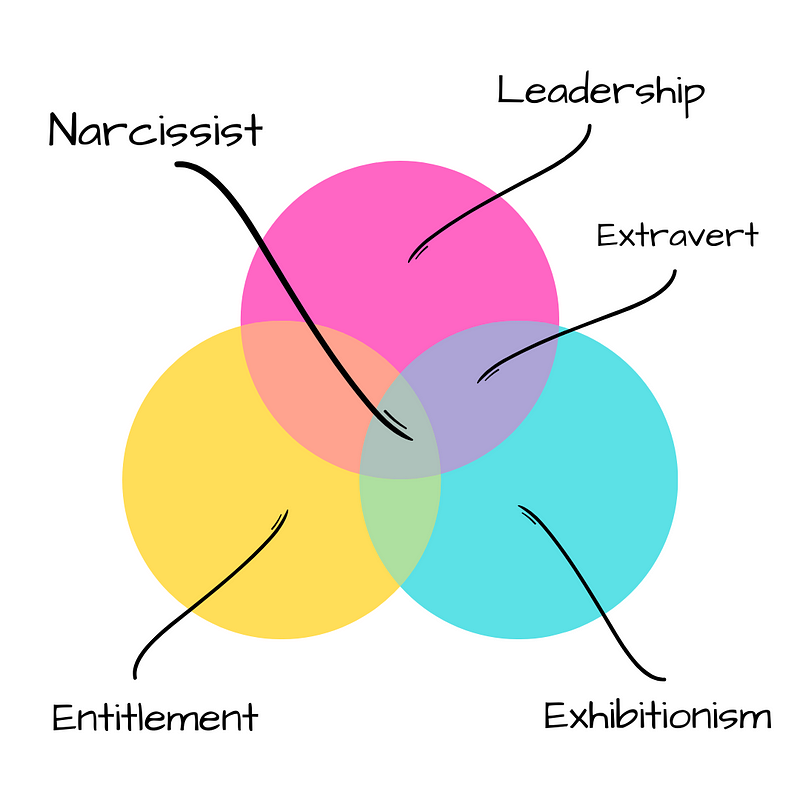The Myth of the "Narcissism Epidemic": A Closer Look at Reality
Written on
Understanding Narcissism in Modern Society
The term narcissism is frequently used in today's discourse, particularly online. A quick look at social media might suggest that narcissistic individuals dominate relationships, that anyone with differing opinions exhibits narcissistic traits, and that platforms like Instagram and TikTok are nurturing a generation steeped in self-obsession. However, the disparity between perception and reality is significant. Most internet users are passive browsers, while those who actively post are a small fraction.
A thorough exploration of the literature surrounding narcissism psychology indicates that our perceptions may not align with the actual trends.
The Origins of the "Narcissism Epidemic"
The notion that narcissism is escalating is not a recent phenomenon. In the 1990s, a group of psychologists authored a book titled The Narcissism Epidemic, arguing that the youth of that era exhibited higher levels of narcissism compared to previous generations, driven by an obsession with celebrity culture. They pointed to phenomena such as hiring paparazzi to follow non-celebrities as evidence of this trend.
Despite their assertions and subsequent publications supporting their claims, these studies faced challenges in replication. In fact, some psychologists discovered that narcissism levels were actually declining among younger individuals. Nevertheless, the narrative persisted. With the advent of social media, many psychologists have revived the belief in a rising trend of narcissism, a sentiment echoed by the general public.
Diving into the Psychology of Narcissism
To grasp the concept of narcissism, we must examine its measurement. The Narcissism Personality Index (NPI) evaluates narcissism through three subscales: Leadership, Exhibitionism, and Entitlement. While Leadership can be seen as a constructive trait, high levels of Entitlement often correlate with negative impacts on interpersonal relationships and underpin narcissistic behavior. Interestingly, research indicates that Leadership levels have been rising over time, while Exhibitionism and Entitlement are on the decline.

Moreover, individuals who excel in Leadership and Exhibitionism tend to score high in extraversion. Some argue that without the Entitlement aspect, one cannot truly be classified as a narcissist. Nonetheless, current theories allow for the classification of individuals with high Leadership and low Entitlement as narcissists, a notion that raises eyebrows among critics.
The Selfie Phenomenon and Its Implications
Similar to the claims made by Twenge about youth idolizing celebrity culture, today's youth are increasingly influenced by social media and the rise of influencers. Their aspirations have shifted from traditional roles like astronauts to becoming YouTube stars. This shift leads psychologists and casual observers alike to perceive an uptick in narcissism among the youth.
Research indicates that frequent posters, particularly those sharing selfies, are often viewed as more narcissistic. Furthermore, analyses of social media activity reveal that Exhibitionism, a trait associated with narcissism, is prominently displayed in many posts. Social media, in essence, becomes a curated version of an individual’s life, highlighting moments of perceived beauty, excitement, or power.
It's noteworthy that in the U.S., a mere 25% of Twitter users generate 97% of all tweets, suggesting that the high-volume posters may not represent the average user experience.
Exploring Gender Dynamics in Narcissism
Studies have also examined the correlation between various characteristics and social media usage. Findings suggest that individuals with lower self-esteem tend to promote themselves more online, with selfie-sharing linked to self-favoring biases. Intriguingly, women are more likely to post selfies than men, and those women often score higher in Leadership traits on the NPI—a trait typically associated with males. Researcher Weiser posits that women may use selfies to enhance their self-esteem in a space where they feel more secure, countering real-world gender stereotypes.
Additionally, much of the existing narcissism research has relied on samples from U.S. universities, predominantly comprised of white, male, and middle-class individuals in the 90s. As campuses diversify, the trend toward narcissism appears to be waning, highlighting the need for caution in generalizing findings to broader populations.
Concluding Thoughts on Narcissism in the Digital Age
There exists a widespread belief among both academics and the general public that narcissism is on the rise due to online interactions. In reality, the overall trend indicates a decline in narcissistic traits. This article does not delve into the experiences of individuals entangled in toxic relationships with narcissists, and it certainly does not aim to invalidate anyone's personal experiences. However, the internet has provided a platform for many to share their stories, potentially amplifying the perception of a narcissism epidemic.
Furthermore, social media has fostered a sense of confidence in individuals, particularly women, allowing them to share aspects of their lives that might be concealed in face-to-face interactions. This can create a disparity between real-life expectations and the seemingly more narcissistic portrayals seen online.
Ultimately, the idea of a "narcissism epidemic" is more of a myth, driven by algorithms and the self-presentation choices individuals make online.
Lorna Rose Gill is a freelance writer from Merseyside, UK, holding a BA in English Literature and an MSc in Psychology. She produces poetry and thought-provoking pieces informed by psychological insights. Stay connected with her work on Instagram or through Medium.